Fantastic series ends it’s run on the current-gen in style.
- Developer: Codemasters
- Publisher: Codemasters
- Release date: 10th July 2020
- Genre: Racing
- Platforms: Xbox One, PlayStation 4, Windows PC, Stadia
- Reviewed on: Xbox One X
- Game Supplied by: Publisher

What pandemic?
Normally at this time of year, the season would be in full swing. Due to the global pandemic, F1 2020 is releasing just days after the hugely eventful season opener in Austria.
With the delays in F1 announcing their schedule, and the lead time needed when making and publishing games, the game doesn’t follow the new trimmed-down schedule with back-to-back races held at the same venue. Likewise, the game has bustling, non-socially-distanced stadiums and maskless pit crews and interviewers trackside.
It’s understandable when you consider how long games take to make and this is a relatively recent development in the whole scheme of things. If you were hoping to recreate this season’s roster, though, you can easily run it as a custom championship.
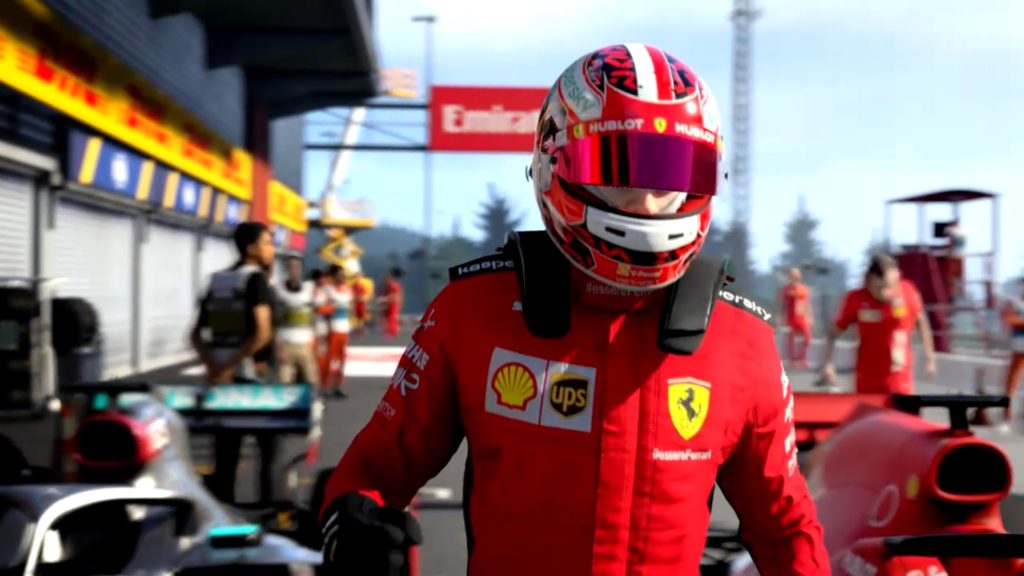
Making a good first impression
F1 2020 has retained the expected clean, modern, minimalist layout for its front end menus, and it makes everything straightforward and easy to navigate. As with everything in the game, it’s all highly-polished and refined close to perfection.
The only significant negative, and something I want to get out of the way as it’s pervasive throughout everything you do, is the load times. There’s no sugar-coating it, some of the load times are long. When you load up a track, on more than one occasion I had to check and make sure the console hadn’t frozen. It’s not a huge annoyance but it’s noticeable, and thankfully something that won’t be an issue in the next generation. For now, though, it’s the only significant blemish in an otherwise brilliant game.
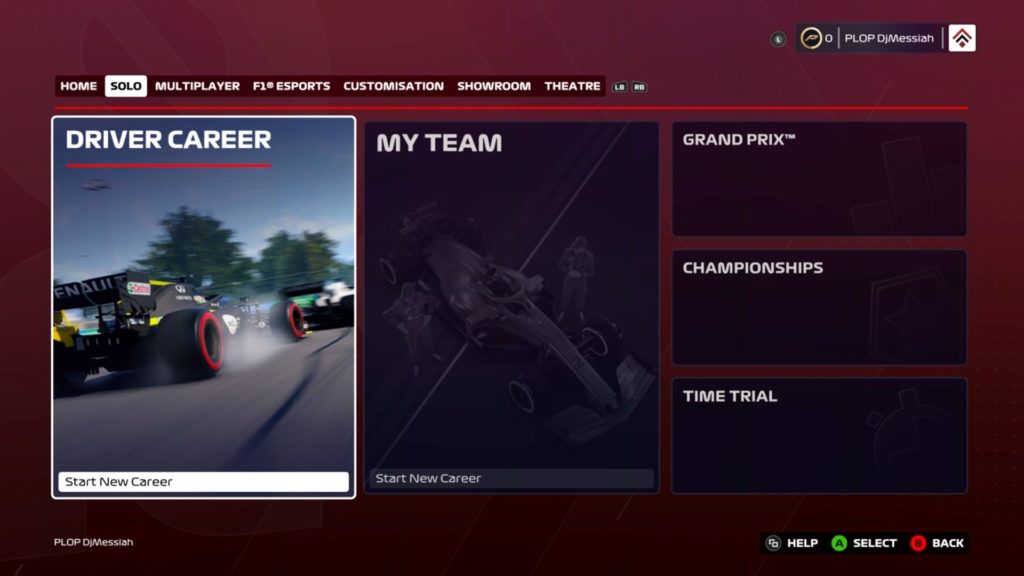
In the driver’s seat
The handling characteristics of the cars haven’t changed much since last year. It’s authentic, seeing how the cars have only faced minor regulation changes and undergone minor upgrades for 2020, but it also means the handling is just as tight and responsive as before. As I hadn’t played much F1 leading up to the review, I struggled with the responsiveness at first. I was over-correcting and turning in too early for the first ten laps or so, but it quickly came back to me. Once I had it dialled in, I was back to the epic wheel to wheel racing I’ve come to expect from Codemasters’ F1 games.
F2 cars still serve as a great jumping-on point for newcomers or those with road-rust, and the identical cars allow for great, close racing. There is more variation in the F1 cars between the teams, though, and the difference is especially pronounced in the (new for 2020) My Team mode.
I reviewed F1 2020 using an Xbox Elite controller, and in split-screen with the standard Xbox controller. The controls are well refined for controllers, and you can make adjustments to fine-tune the saturation and dead zones, but for me the default settings were great. Wheel compatibility is unchanged from F1 2019, with the full list of compatible hardware here. Unfortunately, we didn’t have a wheel available for testing, but they worked great on F1 2019 and I have no doubt it will be just as good this time out.
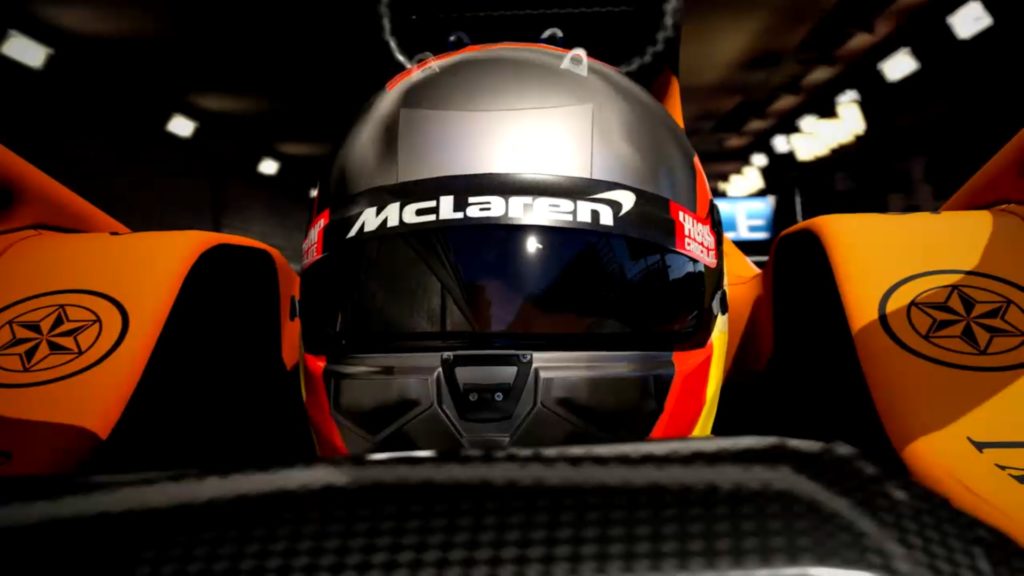
Keeping up appearances
In F1 2019, the biggest improvement was in the new lighting during night-races, but this time round I honestly struggled to notice any difference. If you played the previous game, you’ll know this isn’t a problem, as frankly, it looks outstanding. The detailing on the cars is highly accurate, right down to the finest detail, and trackside scenery is also beautifully realised.
Performance on the Xbox One X is fantastic. Running at 4k60 in HDR, there were no noticeable frame drops, even when jostling amongst a full grid of 22 cars. Driving at over 200mph, the sense of speed is tangible, and it’s super-intense when you are blasting around the tracks with the sun glinting off the bodywork of your car or with rain pattering around you.
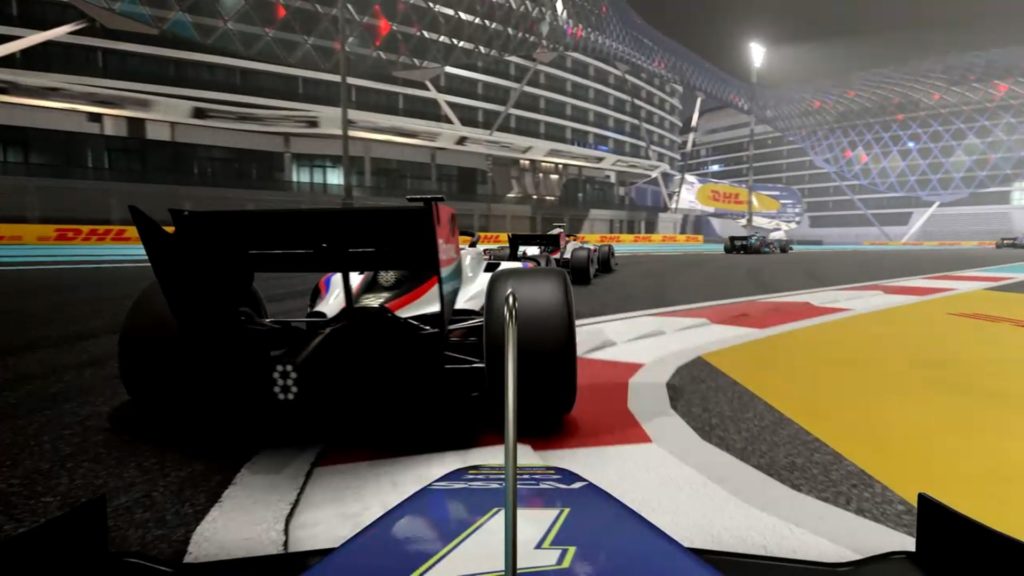
New for F1 2020
F1 2020 features all of the iconic circuits from the 2020 season, including Circuit Zandvoort and Vietnam’s challenging Hanoi Street Circuit. Having never featured in an F1 game before, these new circuits have been built from the ground up for F1 2020.
Accessible handling has been a focus for F1 2020, and they have added Casual Mode. With this new mode activated, there are things like steering assist and braking assist, and an option to automatically return the car to the track if you go off. For experienced racers, you will never need to touch this setting, but if you are differently-abled, or you have younger kids you want to introduce to the thrill of F1, then Casual Mode is perfect.
The adjustable difficulty setting and various assists mean it’s still easy to fine-tune the challenge no matter your skill level. Once you’ve selected from various assists like ABS and traction control, and you can confidently set consistent laps, you can then adjust AI difficulty in minute increments until you have just the right amount of challenge. As you improve, you can adjust the assists and AI and it ensures you can always have close fun racing.
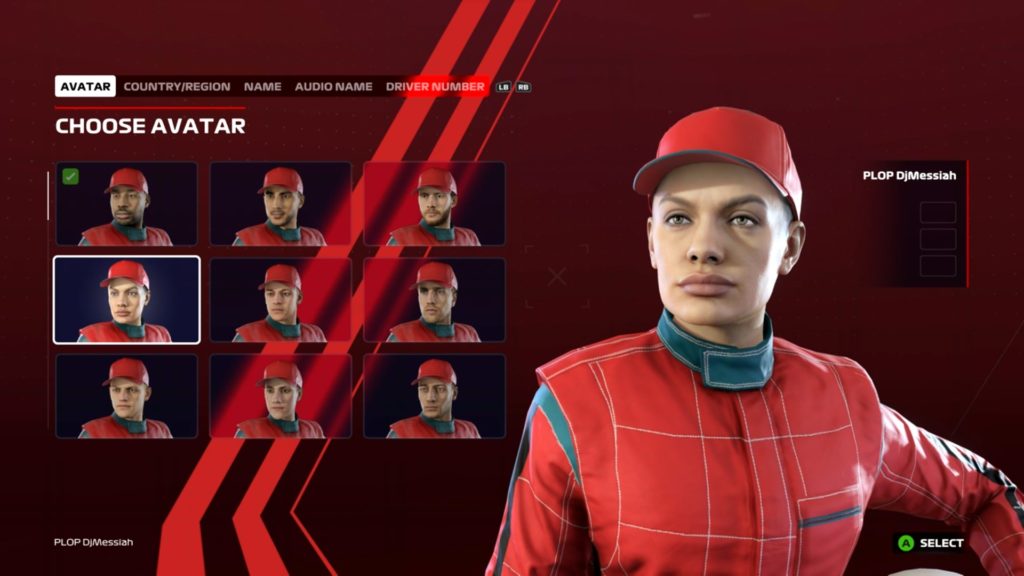
My Team
The biggest new feature for F1 2020 is My Team. You create your own team from scratch: Create your driver, design your livery, choose an engine manufacturer and hire a second driver.
It’s far more engrossing than you would think, and it’s a lot of fun planning out your improvements. Your R&D path works like in previous games, but as a new team, you start with a blank canvas. Your car performance is at the bare minimum, and earning R&D points through completing test programmes during the practice sessions is imperative if you want to become competitive – It’s likely to take several seasons before you get your car up with the big guns like Ferrari, Red Bull and Mercedes.
Choosing which facilities to upgrade is another area of focus, as these provide bonuses to your R&D, your second driver performance and the amount of Acclaim (XP for levelling up) that you earn. Rather than sharing the development points with R&D, these are purchased with cash earned from races and sponsorship contracts. With some upgrades costing tens of millions, it’s a slow burn when you begin. I found purchasing the upgrades that improved the reliability of the R&D upgrades to be most beneficial, to begin with, as research points are hard to come by and the most important thing for levelling up your car.
You may find it a little bit of a grind at first, but the gradual trickle of upgrades soon adds up, and you will notice the increase in performance as you progress. It has a distinctly RPG feel to the progression, and in the long run it’s likely to hold your interest far more than just being gifted the best car on the grid right from the off.

Driver Career
If all of that sounds like too much micro-management for you, Driver Career offers a still in-depth but more racing focussed approach. You can start in F2, completing either a 3 race, medium or full-length season. Your performance, and the driver academy attached to the team you choose, will determine the team you join in F1. Alternatively, you can just jump straight into F1 driving for your favourite team.
The biggest difference to My Team is that these teams are well established, and you’ll find R&D starts at a much higher level, as well as having a head start with the facilities. R&D is still chosen by you and you earn points the same way, but the facilities and second driver management are all handled by the team. It’s basically the same as the career in F1 2019, and while I love My Team, there’s sure to be some who appreciate being able to jump straight in with better machinery and without so much busywork involved.
N.b. The story cut-scenes they introduced in 2019 have been scrapped this year. Personally, I thought they were OK, but they needed to be significantly improved and expanded if they were to become relevant. I’m glad that they have removed them rather than have a few forgettable scenes where the end result is by and large meaningless.
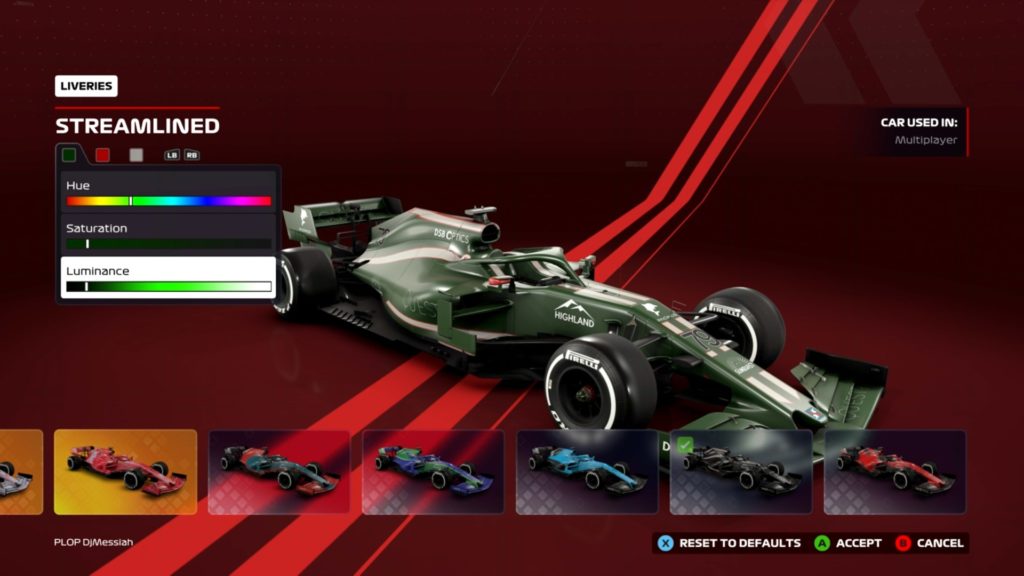
Pick-up and play
Sometimes you don’t want to jump into a full season in career mode. Maybe you want to run the same track as the current IRL race, run some hot laps or you have a friend around who you want to let have a go without wrecking your progress. As usual, F1 2020 has a full complement of quickplay modes.
Grand Prix lets you run a single race, while Championships offers a selection of curated championships featuring the current F1 schedule, the 2019 Formula 2 championship, and a selection of championships you can run using the classic cars included in the game.
Within Championships mode, you can also race the invitational events from the career. There are checkpoint challenges, overtaking challenges, time-trials and pursuit races. These provide a welcome distraction from the intensity of the career mode, and hopefully, they will add more, as there are only twelve of them so far.
Rounding out the quickplay options is Time Trial, and it’s functional and fun. You can choose a ghost from the leaderboards to race against, and this runs in tandem with your own best lap ghost. You can race around all of the tracks, including some short variations of some tracks for a total of 26. There are separate leaderboards for F1, F2 and Classic cars, with separate leaderboards within these for wet races. All-in, you’re looking at 156 separate leaderboards you can set times on, which should keep the most ardent of hot lappers busy for quite some time.
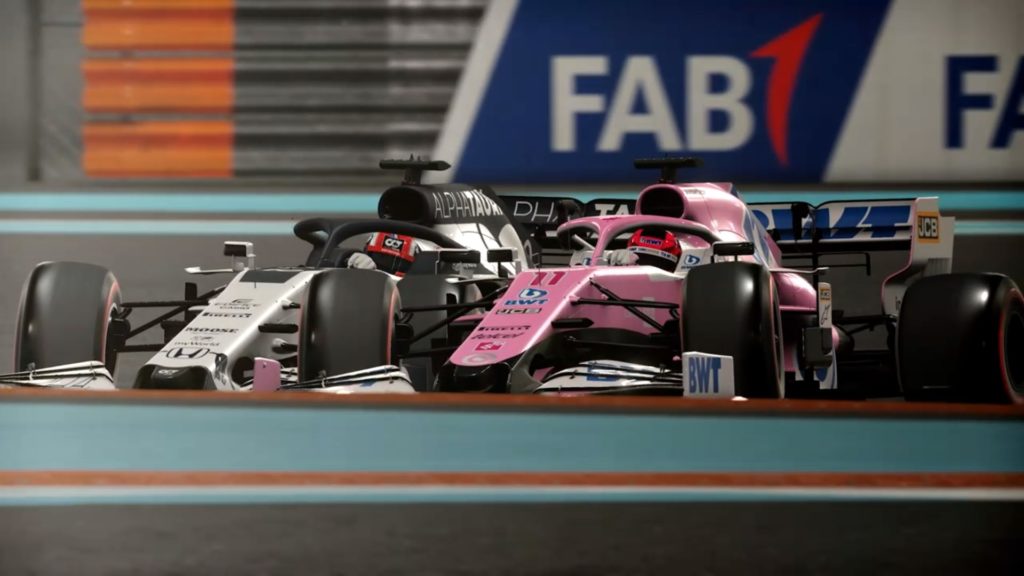
Multiplayer
We were unable to test online for stability during the review, due to the game not being out for public release yet. It is, however, full of options for casual races, ranked matches, customised leagues and even full-fledged eSports.
Ranked and Unranked matches are common in most racing games, but for us, the leagues hold the most interest.
You can create a league for the general public, or only available to friends or those who you give the password to. You can schedule races at set times on a daily, weekly or monthly timetable, or do an on-demand setup if you prefer. Once you’ve decided on the frequency of events, you then have full control of every part of the setup, including forcing parity of cars, restricting available assists and even adjusting race grids, applying penalties and adjusting standings. For the numerous groups out there who like to organise their own series, they are incredibly well catered for.
If you do open up to the public, every gamer has a super license that shows attendance ratings and their safety rating. You can use this to help decide if someone is likely to be a worthwhile addition to your league, or if they are likely to not turn up or cause carnage when they do.
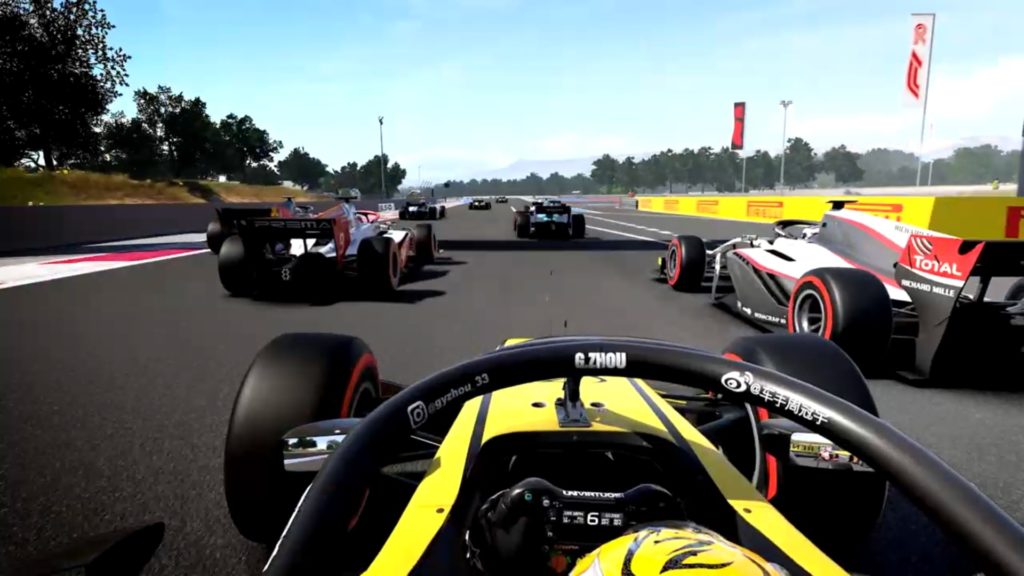
Split-screen
For the first time in an F1® game series since 2014, players can race in split-screen. Sadly there isn’t the option to do career mode in co-op, but you can set up your own customised series of races to run, and it works very well. There is a hit to the frame rate, but it’s stable and more than good enough for some fun races with a (socially distanced) friend.
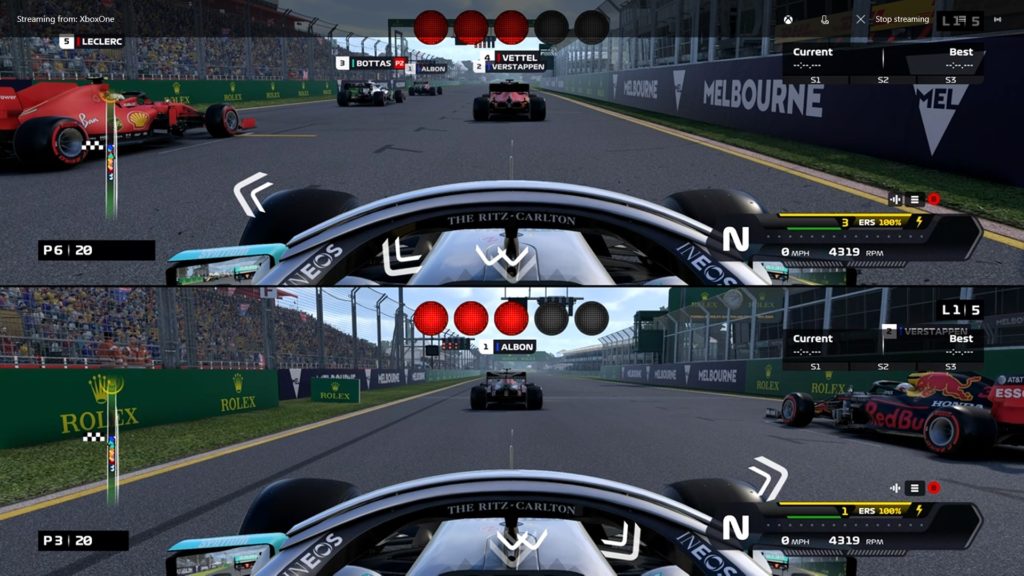
eSports
Until the game goes into general release, the eSports mode isn’t active so we weren’t able to test it out. Once released, though, there is the opportunity for players to earn a place in professional eSports teams. Since the lockdown and stoppage of real-life racing, there has been a huge surge in the popularity of sim-racing and eSports, and F1 2020 is one of the more popular titles, with the real drivers taking part in races held on the F1 games. If you’ve got what it takes, there’s a great opportunity to showcase your skills and maybe make it to the big leagues.
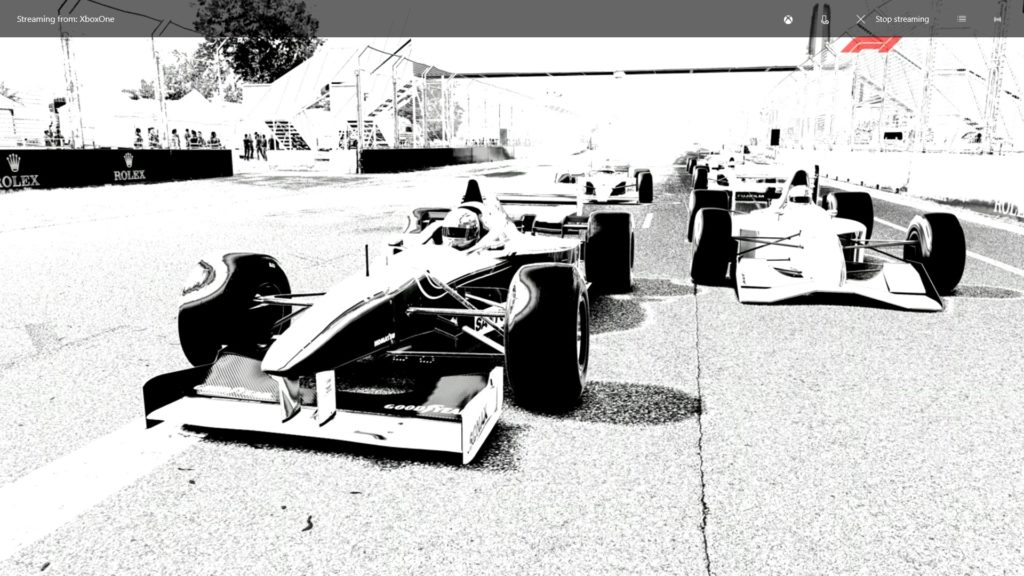
Who should buy F1 2020?
Much like the previous games, if you only play single player, and you aren’t that fussed about having accurate liveries and driver line-ups, then you will be served just as well by picking up F1 2019. Even F1 2018 is still a great game, and for casual gamers who aren’t huge fans, you’ll probably enjoy those just as much for a fraction of the cost.
However, F1 2020 has added just enough new features to keep hardcore fans interested. My Team adds a level of depth and RPG-like progression to the gameplay, while this is definitely the most polished and highly refined F1 experience to date. On top of that, if you place any value at all on multiplayer, league racing or eSports, then you should definitely upgrade to the newest game. It’s fully featured, user friendly and able to support customised competitive league racing with a level of fluency other console racers only dream of.
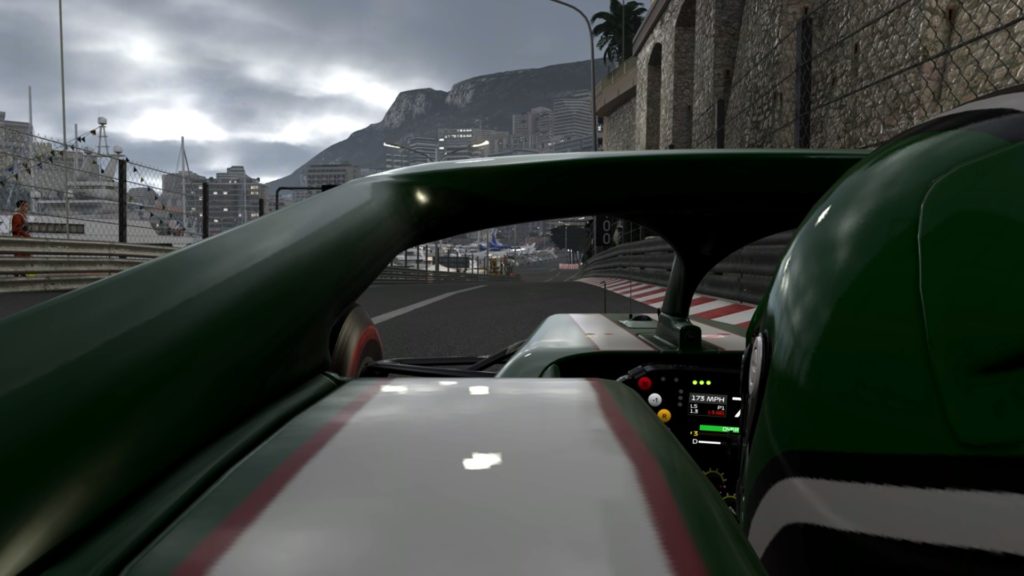
Summary
F1 2020 serves as Codemasters’ swansong to the current generation of consoles. It could easily be argued that each new yearly version has been more iterative than innovative, but that has all added up to where we are today, and there is no doubt that this is one of the best racing games ever made, and easily the best F1 game.
Approachable for newcomers, and well-balanced enough to support serious eSports events, whether you are hardcore F1 fan or just a racing fan in general, this is Codemasters’ best effort yet, and sure to be entertaining for almost everyone.



F1 2020: Beginner's Guide (Video) | Total Gaming Addicts
9th July 2020 at 11:02 pm[…] out our full review of F1 2020, then get out there and pick it […]